In the eyes of many, Louis Ng Chi-sing is living the dream. In 2012 the Macao businessman purchased the historic Château de Gevrey-Chambertin in Burgundy, and legendary [Scroll down for English version]
RVF China Spring 17 Land GrabAuthor: Charles Curtis MW
Demystifying Champagne Roses de Jeanne and Cédric Bouchard
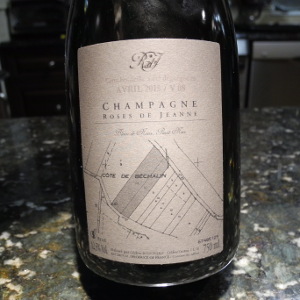
I recently had a bottle of the 2008 Blanc de Noir Côte de Béchalin from Roses de Jeanne, produced by Cédric Bouchard, This was a noteworthy bottle of wine from one of the rising stars of the southern Champagne subregion of the Aube. Unfortunately, it was also a bit confusing. It is definitely worth the effort to get to know this producer, however, so a bit of explanation is in order. When he began in 2000, he worked a 0.9 ha plot called Les Ursules belonging to his father, which he called “Champagne Roses de Jeanne” as a tribute to his grandmother. Later he added another 1.5 ha vineyard site called Côte de Val Vilaine, which he initially called Inflorescence. Since 2012, however, it has been labeled with the name of the vineyard, thus Côte de Val Vilaine, and since 2014 all of the champagne from Cédric Bouchard is bottled under the Roses de Jeanne label.
To this initial structure, he began to add single vineyard wines. The first was called initially La Parcelle, a 1.5 ha plot planted to Pinot Noir, which is now called by the vineyard name, Côte de Béchalin. In 2004, he began to produce a Chardonnay from a 0.12 ha vineyard called La Haut-Lemblé. There is also a tiny production of rosé from the 0.07 ha vineyard Le Creux d’Enfer, and a Blanc de Blancs made from Pinot Blanc from the 0.22 ha vineyard La Bolorée. The newest edition is a Blanc de Noirs from the 0.25 ha vineyard called Presle. All are worth trying. I found the Côte de Béchalin absolutely superb. It really shows the possibilities of the Blanc de Noirs style. It goes through malolactic fermentation, but receives no dosage and thus retains a crisp, fine edge and an almost citrus/saline cast in spite of grape variety. The wine is produced from tiny yields with minimal intervention, and is aged in bottle six years before release to give a stunning complexity and depth of flavor in spite of the fine, racy profile.
May Saint Vincent Bless You
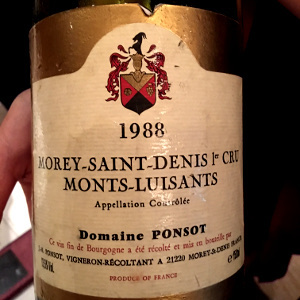
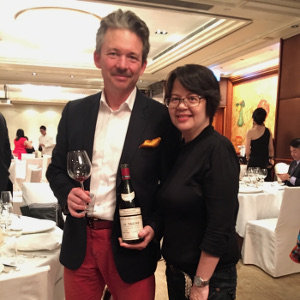
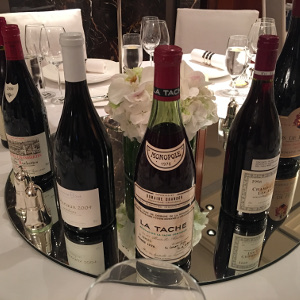
Fortunately it is not necessary to march in the saint’s parade during a cold Burgundian winter in order to commemorate the memory of Saint Vincent of Saragossa. I was happy to pass my Saint Vincent this year in the very civilized environs of the Mandarin Oriental Hong Kong at a dinner organized by the local importer Pearl of Burgundy. It was a few days in advance of his official celebration on 22 January – peu importe! A number of winemakers were present and pouring their wine, and the guests had all brought wine from their cellar. We tasted some marvels.
Although Saint Vincent is the patron saint of vintners, his association with the grape is a bit of a mystery. We do know that he was the first martyr of Spain, who died in Valencia in 304 AD under the rein of Emperor Diocletian. French winemakers, who like him perhaps because his name starts with “Vin”, have long celebrated his feast day. In 1938 the Confrérie des Chevaliers du Tastevin resurrected the official celebration of the saint, which takes place in a different village each year, and is thus known in Burgundy as the “Saint Vincent Tournante”, which is celebrated on the last weekend in January.
The first wine of the evening was a 2014 Meursault Genevrières (***) provided by our vintner host, Domaine Tessier, which showed a clean fresh note of lemon peel and butter. It was fresh and elegant on the palate, with lovely balance and a lingering finish. Friends from Zachys Wine Auctions brought a magnum of 1988 Morey Saint-Denis Clos des Monts Luisants from Ponsot (*****) that was extraordinary, with notes of caramel and honey on the nose that open up to truffle and mineral. This is a very particular wine, produced in large part from Aligoté planted in 1911. In the 1930s, Laurent Ponsot’s grandfather Hippolyte planted about 15% of the vineyard to a variety called “Pinot Gouges”, which was a Pinot Noir vine from Domaine Henri Gouges that had mutated to produce white grapes which Gouges had propagated via cuttings. In the 1950s, Laurent’s father Jean-Marie planted about 20% of the vineyard to Chardonnay, and this was the approximate grape blend of our 1988 magnum. In 1992 the Pinot Gouges was ripped up, and in 2004 the Chardonnay was as well, and from 2005 this wine is produced from 100% Aligoté, making it the only premier cru in Burgundy produced exclusively from this grape.
2014 Bordeaux : love them, like them, or leave them alone ?
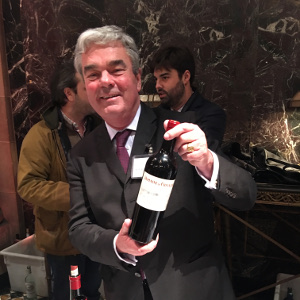
What to make of Bordeaux 2014? This is an interesting time to assess the wines, as they are about to ship, yet they are still available as futures. Recently there has been a perceptible uptick in interest in Bordeaux. A colleague from the auction market speculated last night that Bordeaux had gotten so uncool that it was beginning to be cool again. For my part, I have been drinking the wines all along, in good vintages and bad, the best wines and the best value wines. However, since I did not attend the en primeur tastings of the 2014 or 2015 vintages, I now rely on tasting them closer to when they arrive on our shores, and thus the tastings organized by the Union des Grands Crus is very important. This report only assesses those wines poured at this tasting, which occurred Monday in New York.
The grape growing year started well, with auspicious weather in the spring and a very good flowering that set the stage for a large-ish harvest. Unfortunately, the three months that followed saw a cool, rainy growing season that made for some very morose winemakers. After all, the quality of the vintages could hardly be anything but disappointing following the absolutely stellar 2009s and 2010s, and in August of 2014, growers feared another wash-out. Luckily for all concerned, record levels of dry, hot weather came through in September and lasted through the first week in October. Only a bit of rain on 8 October prevented a perfect arrière-saison. A bit later in the year the conditions were also right for a solid formation of botrytis in Sauternes. All in all, a good year, if not a great one. There is decent ripeness, but one of the hallmarks of the vintage generally is a lively acidity that one finds either refreshing or a bit green according to personal preference.
2017 Wine Auction Season Off to a Mixed Start

The 2017 wine auction season began with two sales in Hong Kong in advance of the Chinese New Year holiday to mixed results. Acker, Merrall reported strong interest in their January 14th sale at Grissini for their consignments directly from Burgundy domaines. The domaines participating included Jean-Marc Roulot, Fourrier, Hudelot-Noellat, Lamarche, Lignier, Duroché and Clos de la Chapelle. Some prices commanded a premium as in the example of magnums of the 2007 Roulot Perrières, which sold for $2,975 each, as compared to $2,032 at HDH a year ago. Magnums of the 2007, however, achieved less than they did at Sotheby’s in December 2015 ($2,125 as compared to $2,245). Elsewhere prices were also moderately strong, with Acker reporting their top lot as six bottles of 1999 Romanée-Conti, which made $121,110 ($20,185 per bottle), ahead of last year’s average with premium of $16,174 per bottle, but considerably less than the $25,381 per bottle achieved last November by Christie’s Hong Kong. The Acker sale overall was US$ 5,492,773 over 992 lots, 92% sold.
Sotheby’s Hong Kong has also reported the results of their first sale of the season featuring the Connoisseur’s Cellar Part II, at US$ 3,333,581 over 939 lots, a rather disappointing 87.2% sold. Sotheby’s saw great interest in Pétrus (24 lots, all sold), and Japanese Karuizawa whisky, with 35 lots, all selling through completely. Elsewhere, as at Acker, however, prices were mixed. Two bottles of ’45 Mouton sold for $18,846/btl. This was less than the 2016 average, but it should be noted that this average price last year was considerably buoyed by their own result for Bill Koch back in May, when they achieved a remarkable $34,300 per bottle for the same wine. Six bottles of 1990 Échézeaux “Henri for Georges” Jayer, however, sold for $6,282, attaining very nearly the level they did in that landmark sale, when it brought $6,533/btl.
Hong Kong during Chinese New Year is a heady place, though it seemed that buyers were saving their excitement for later in the year. Let’s hope that the rooster brings his trademark passion and courage to the wine buyers everywhere. 恭喜发财!
2016 Wine Auction Market Analysis
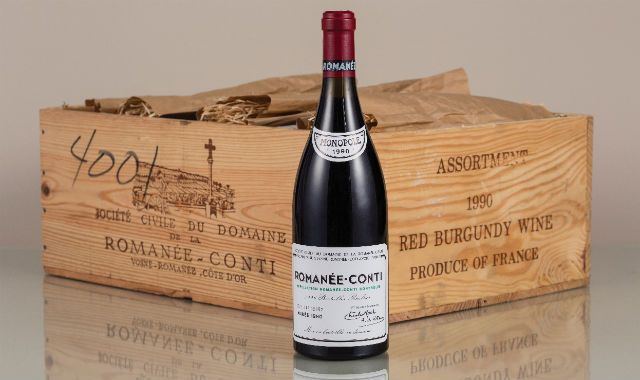
Executive Summary
Auction sales picked up considerably in the second half of 2016, carrying the results into positive territory, ending the year at $299 million, +2.22% over last year. While burgundy wine continues to sell well, prices for some top wines are beginning to plateau, although there is still upward movement to prices in this category. Prices for Bordeaux wine are making a resurgence in the secondary market, although it is less than some hope or claim. In the primary market for fine wine, the campaign for the 2015 Bordeaux vintage showed prices that were higher than the trade would like but lower than the producers would have liked, while the bellwether Hospice de Beaune auction announced results sharply down from last year.
2016 Wine Auction Market Review
The auction market for fine and rare wine finished second half of 2016 in vigorous fashion, with US$ 154.8 million in sales, +7% over the same period last year and +6.8% above the first six months of the year. This made up considerable ground, as value had dropped by -2.98% in the first half of the year, despite some high profile sales during the spring season. Interestingly, the increase in the total sales came despite a drop of 6.7% in the number of lots coming to auction, showing a healthy increase in the average lot value and pointing to greater quality of property coming to sale.
Specific highlights of 2016 included the following:
Feast Yourself Thin: salad of peekeytoe crab, sea urchin and caviar
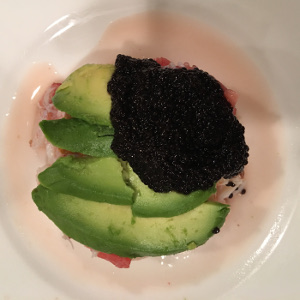 This dish, inspired by David Bouley, is a pure expression of the sea. The flavors of the crab, caviar and sea urchin are all distinctly maritime, yet all three are radically different. For me, the slightly fatty quality of the avocado serves to tie them all together. This is a great dish to make when both crabs and sea urchins are in season. Be prepared to substitute blue crabs for peekeytoe and Maine sea urchins for those from the Pacific Northwest.
This dish, inspired by David Bouley, is a pure expression of the sea. The flavors of the crab, caviar and sea urchin are all distinctly maritime, yet all three are radically different. For me, the slightly fatty quality of the avocado serves to tie them all together. This is a great dish to make when both crabs and sea urchins are in season. Be prepared to substitute blue crabs for peekeytoe and Maine sea urchins for those from the Pacific Northwest.
Serves 6
1 pint peekeytoe crab
2 ounces osetra caviar
6 fresh sea urchins
2 avocados
2 ruby grapefruits
2 – 3 limes, depending on size
Salt and pepper
Ask your fishmonger to cut the urchins in half, which will save you an awful lot of trouble. The urchin roe is then fairly straightforward to remove. Retain only the fawn-colored roe; I imagine you will not be anxious to keep anything else you find in there. Season the crabmeat with lime juice, salt and pepper. Peel the grapefruit with a paring knife and use a serrated knife to remove the segments. Cut each segment in half, and add them along with the grapefruit juice to the seasoned crab. Cut the avocado in half, remove the pit, and scoop the flesh from the skin with a spoon. Slice into relatively thin slices and reserve.
Use a four-inch pastry cutter as a mold, placing it in the middle of the plate. Fill the cutter halfway with the seasoned crabmeat. Lay one-sixth of the sea urchin on top, and cover with sliced avocado. Spread as liberally as you dare with caviar and garnish with chives.
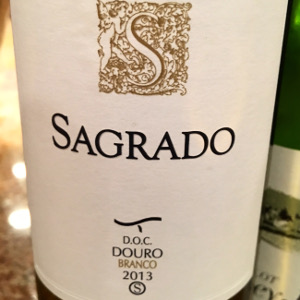 Douro Branco 2013, Sagrado
Douro Branco 2013, Sagrado
Portugal’s Douro Valley has been known for centuries for its fortified Port wine. Justly renowned, it tends to eclipse the lighter wines of the regions. This should not, however, prevent you from exploring them. First to come to notice were the reds, produced from traditional Port varietals but unfortified, and the first real success story was Barca Vehla, which is still a reference standard. For a time the light reds and whites were considered somewhat rustic, but in recent years there has been a complete quality revolution, and the region is now producing delightful wines from indigenous varietals. This white is a blend based on Rabigato, with Gouveio, Viosinho and a splash of Côdega de Larinho. Never heard of them? Don’t worry, it’s delicious. Although the wine showed itself rather reticent on the attack, it has a marvelously creamy texture and intriguing notes of herbs and spice and an almost mineral note that develop on the palate.
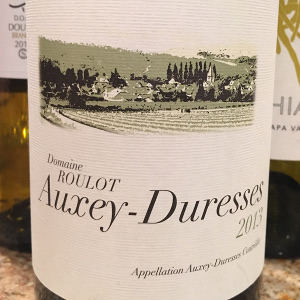 Auxey-Duresses Blanc 2013, Domaine Roulot
Auxey-Duresses Blanc 2013, Domaine Roulot
Jean-Marc Roulot is extraordinarily gifted – not only a movie star, but also one of the established stars of among Burgundian winemakers. His sensitivity and sure hand are evident in all his wines, which are characterized by racy acidity, a mineral tang, and a lush, silky feel on the palate. Here he uses 60 year-old vines from the modest commune of Auxey-Duresses to craft a wine of finesse and elegance which belie the nature of the appellation. There is a lovely lemony freshness touched with some gentle oak spice on the nose and a texture that is crisp yet not lacking substance along with a lingering finish. A great match with this dish: too much oak or weight would probably overpower the delicate maritime flavors of the salad but this is super-elegant white burgundy with a splendid restraint.
Feast Yourself Thin: baked eggs with prosciutto and porcini
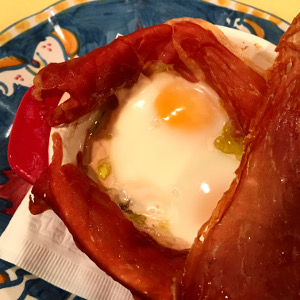 This is an adaptation of a dish that I first ate for breakfast in Piemonte during truffle service. The original was copiously laden with white truffles, and for those whose larder stretches that far, please feel free to substitute them here. If not, you may also use the dried porcini, which give a very fine result.
This is an adaptation of a dish that I first ate for breakfast in Piemonte during truffle service. The original was copiously laden with white truffles, and for those whose larder stretches that far, please feel free to substitute them here. If not, you may also use the dried porcini, which give a very fine result.
Serves 6
- 12 eggs
- ¼ lb. thinly sliced prosciutto
- 6 tbsp. dried porcini
- 6 tbsp. heavy cream
- Salt and pepper
Reconstitute the porcini by adding them to boiling salted water. Allow them to tumble briefly in the boiling water, cover, remove from the heat and allow to sit for 15 – 20 minutes, until soft. Chop coarsely and cool to room temperature.
Preheat the oven to 350˚F. Oil a cookie sheet lightly and cook one slice of prosciutto per person while preparing the cocottes. Bake until crisp, approximately ten minutes. Remove and reserve.
Prepare six cocottes by lining the tops of each with a slice of prosciutto, and place a tablespoon each of the dried porcini and heavy cream in the bottom of each. Break eggs, two by two, into a bowl without breaking the yolks. Season the eggs with salt and pepper and slide into the cocottes.
Place the cocottes into a baking pan, and place the baking pan into the oven, pouring boiling water halfway up the side of the cocottes. Cook for fifteen minutes. At the end of fifteen minutes, begin to check the cooking by gently shaking the baking pan. Remove from the oven when the white is set but while the yolk is still soft. Top with the crispy prosciutto and serve.
Wines:
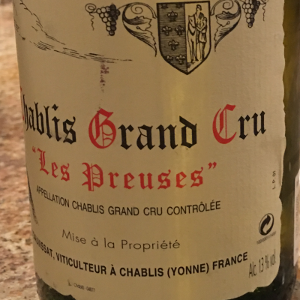 Chablis Montée de Tonnerre 2001, Raveneau
Chablis Montée de Tonnerre 2001, Raveneau
This Chablis is an extremely luxurious choice for this dish, but a very successful one. The spicy, citrus-hued complexity speaks to the rich, earthy character of the porcini, while the crisp acidity is a perfect foil for the salty prosciutto. Montée de Tonnerre is a premier cru Chablis, but it is arguably the closest to the grands crus. It is also a specialty of Domaine François Raveneau, widely considered the premier producer of Chablis. The wines are expensive, but certainly worth the investment for the true lover of white burgundy. The texture of the Raveneau’s Montée de Tonnerre is invariably rich, and the finish is extremely long. This is a pretty decadent wine, but while serving this dish at a formal dinner there would be few better choices.
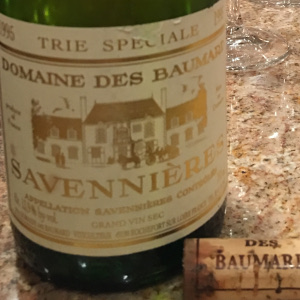 Savennières “Clos du Papillon” 2001, Domaine des Baumard
Savennières “Clos du Papillon” 2001, Domaine des Baumard
Savennières is produced from the Chenin Blanc grape in the Loire Valley near the city of Anjou. The best examples can age for decades and develop a sweet-savory complexity that melds honey, ripe peaches, and an earthy note that is often described as “lanolin”, or even sheep-like. It is, however, an exquisite sheepy-ness. Baumard is generally considered the most skilled and classic producers of Savennières, and this cuvee is produced from a south-facing site on the Loire River that ripen the grapes to perfection. Although there is a lush element to the nose, the wine is normally still dry on the palate, with just a hint of sugar to balance the bracing acidity of the Chenin Blanc grape. A very ripe vintage such as the 1997 that I recently enjoyed will have just a bit more sweetness which will be an interesting counterpoint to the salty ham.
Zachys Offers Wines Direct from Domaine Faiveley and Nath. Johnston
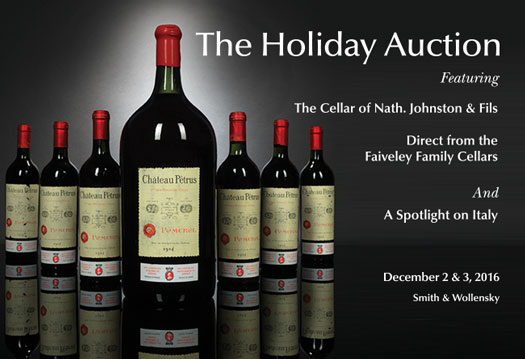
Lovers of old claret, burgundy and Italian wines will swoon at the offerings in the Zachys Holiday sale on December 2nd. This triple-header features a number of strong consignments from various vendors, but really takes off with a selection from the cellars of Bordeaux negociant Nathanial Johnston that includes the 6 bottles and one jero of Petrus 1924, reconditioned at the property, but also more than 2 cases of the sublime ’64 Petrus, mags of the epic ’49 Cheval Blanc, 1890 Pillet-Will Margaux, ’49 Cos, 1916 Gruaud Larose eand 1919 Yquem. The second chief highlight is a consignment direct from Faively, which includes the first-ever jeros of their super-cuvée of Clos de Bèze, Les Ouvrées Rodin, as well as Clos des Cortons from the ’28 and ’59 vintages. The trifecta is completed with a rich selection from Italy that features large parcels of Masseto and Gaja as well as a robust selection of almost all of the top Italian collectible wines.
MW Fortified Wine Tasting 2016
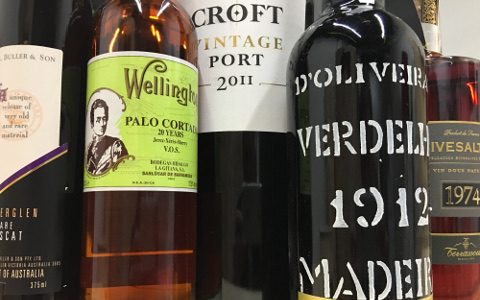
Like the heady aromas of the wines on offer, an almost palpable air of discovery permeated the inaugural MW Fortified Wine Tasting, held in the shadow of the Flatiron Building in New York on October 26th. Wine professionals and serious collectors traveled from around the country to taste over 130 different fortified wines. The walk-around, self-serve format and the well-managed flow of tasters throughout both two-hour sessions allowed serious reflection of the rich array of wines. Jerez was particularly well-represented, but Port, Madeira, the Roussillon, and Australia all showed exceptional wines.
Organized alphabetically by producer within established categories, the tasting began with Manzanilla and ended with the rich wines from Rutherglen and elsewhere in Australia. On the Manzanilla table, the bright, salty freshness of the traditional Manzanillas like the Solear from Barbadillo and Lustau’s Papirusa were crisply refreshing, while the silky, softer texture of the Manzanilla Pasadas such as the Pastrana from Hidalgo and the “La Kika” bottling from Bodegas Yuste seduced in a more understated manner.
